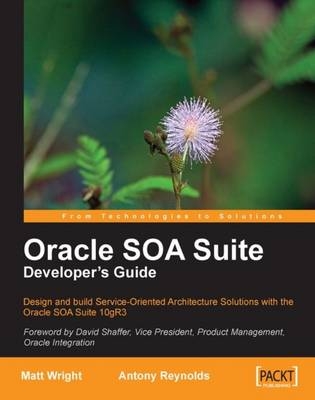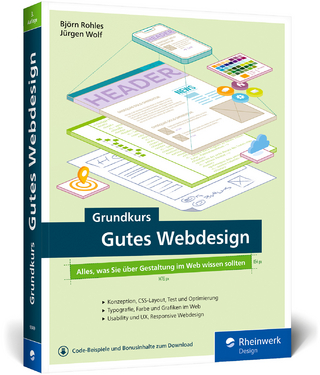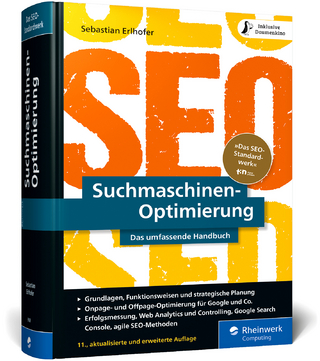
Oracle SOA Suite Developer's Guide
Packt Publishing Limited (Verlag)
978-1-84719-355-1 (ISBN)
- Titel ist leider vergriffen;
keine Neuauflage - Artikel merken
Antony Reynolds has worked with Oracle BPEL from the days before Oracle acquired Collaxa in 2004 and with it the product now known as the Oracle BPEL Process Manager. Since then Antony has been a keen evangelist of the power of SOA and has worked with key European customers to help them realize the power of the Oracle SOA Suite within their own organizations. Prior to joining Oracle, Antony was a system architect working on the Galileo Computerized Reservation System. The business-driven architecture skills Antony learned there have proven invaluable in helping him to see beyond initial flashy solutions and understand the issues that will come with implementing SOA solutions in a high-volume 24x7 environment. With more than 20 years of IT experience Antony has always focused on secure, high-volume systems on the leading edge of the technology curve and is now a leading proponent of business-focused SOA at Oracle. Matt Wright is a director at Rubicon Red an independent consulting firm helping customer's enable enterprise agility and operational excellence through the adoption of emerging technologies such as Service-Oriented Architecture (SOA), Business Process Management (BPM) and Cloud Computing. With over 20 years experience in building enterprise scale distributed systems, Matt first became involved with SOA shortly after the initial submission of SOAP 1.1 to the W3C in 2000, and has worked with some of the early adopters of BPEL since its initial release in 2002. Since then, he has been engaged in some of the earliest SOA-based implementations across EMEA and APAC. Prior to Rubicon Red Matt held various senior roles within Oracle, most recently as Director of Product Management for Oracle Fusion Middleware in APAC, where he was responsible for working with organizations to educate and enable them in realizing the full business benefits of SOA in solving complex business problems. As a recognized authority on SOA, Matt is a regular speaker and instructor at private and public events. He also enjoys writing and publishes his own blog (http://blog.rubiconred.com). Matt holds a B.Sc. (Eng) in Computer Science from Imperial College, University of London.
Section 1 Getting Started Chapter 1: Introduction to Oracle SOA Suite: An initial introduction to the Oracle SOA Suite and its various components. Chapter 2: Writing your first service: A hands-on introduction to the core components of the Oracle SOA Suite, namely the Oracle BPEL Process Manager and the Oracle Service Bus. Chapter 3: Service-enabling existing systems: Looks at a number of key technology adapters and how we can use them to service-enable existing systems. Chapter 4: Loosely coupling services: Describes how we can use the Oracle Service Bus to build services that are implementation-agnostic. Chapter 5: Building composite services and business processes: Covers how to use BPEL to assemble services to build composite services and long-running business process. Chapter 6: Adding in human workflow: This chapter looks at how human tasks can be managed through workflow activities embedded within a BPEL process. Chapter 7: Using business rules to define decision points: This chapter introduces business rules and how we can use them to externalize "decision points" in a BPEL process. Chapter 8: Building real-time dashboards: This chapter looks at how Business Activity Monitoring (BAM) can be used to give business users a real-time view into how business processes are performing. Section 2 Putting it all together Chapter 9: oBay introduction: Provides a blueprint for our SOA architecture, highlighting some of the key design considerations and describing how they fit our architecture for oBay. Chapter 10: Designing the service contract: Gives guidance on how to design XML schemas and service contracts for improved agility, reuse, and interoperability. Chapter 11: Building business services: Examines different approaches for building new business services either from scratch or by re-using existing logic. Chapter 12: Building validation into services: Examines how we can implement validation within a service using XSD validation, Schematron, and Business Rules. Chapter 13: Error handling: This chapter examines strategies for handling system and business errors, with detailed coverage of the BPEL Fault Management Framework. Chapter 14: Message interaction patterns: Covers complex messaging interactions, including multiple requests and responses, timeouts, and message correlation (both system and business). Chapter 15: Workflow patterns: Looks at how to implement workflows involving complex chains of approval and how to use the Workflow Service API. Chapter 16: Using business rules to implement services: Here we look at the Rules engine s inferencing capabilities, and how we can use them to implement types of business services. Chapter 17: The importance of bindings: Looks at the protocols available in addition to SOAP over HTTP for invoking web services and the advantages they provide. Section 3 Other considerations Chapter 18: Packaging and deployment: Examines how to package up a SOA application for deployment into environments such as test and production. Chapter 19: Testing composite applications: Looks at how to create, deploy, and run test cases that automate the testing of composite applications. Chapter 20: Defining security and management policies: Details how to use Web Service Manager to secure and administer SOA applications.
| Erscheint lt. Verlag | 15.12.2010 |
|---|---|
| Verlagsort | Birmingham |
| Sprache | englisch |
| Maße | 191 x 235 mm |
| Themenwelt | Informatik ► Web / Internet ► Web Design / Usability |
| ISBN-10 | 1-84719-355-2 / 1847193552 |
| ISBN-13 | 978-1-84719-355-1 / 9781847193551 |
| Zustand | Neuware |
| Informationen gemäß Produktsicherheitsverordnung (GPSR) | |
| Haben Sie eine Frage zum Produkt? |
aus dem Bereich


